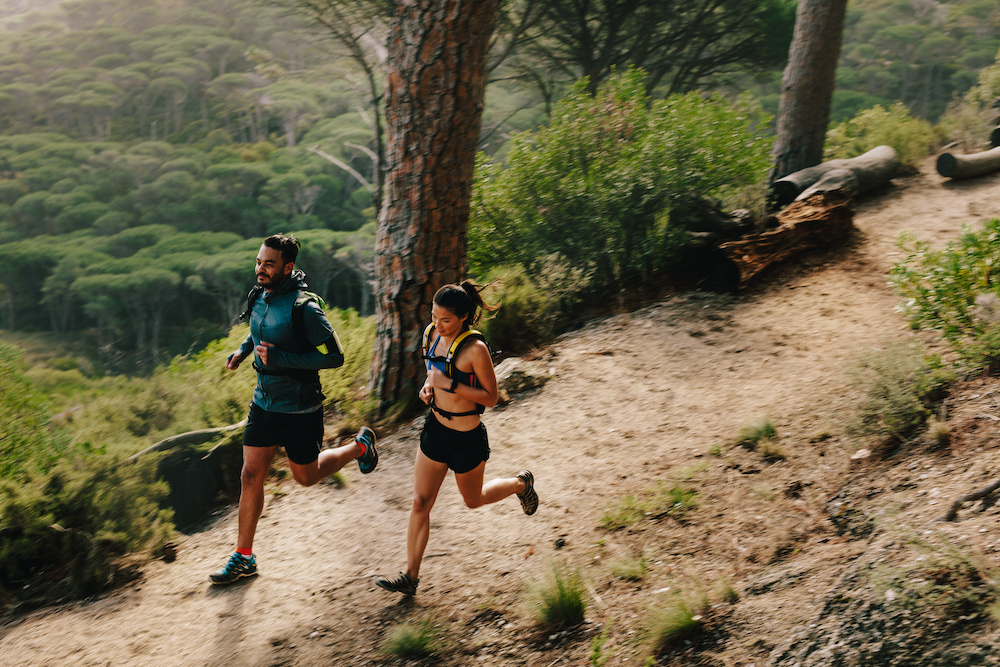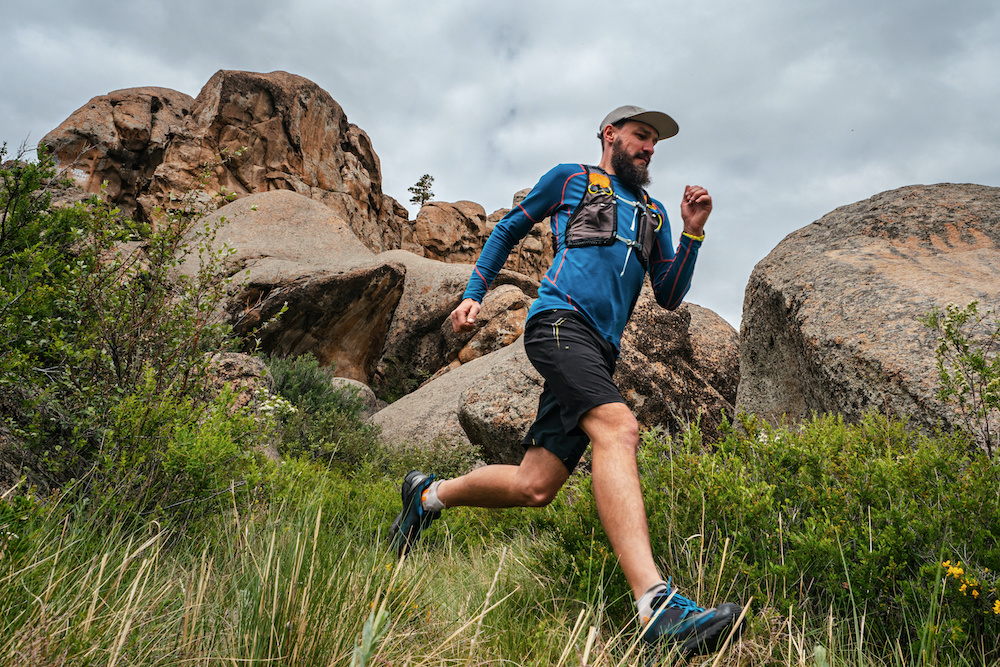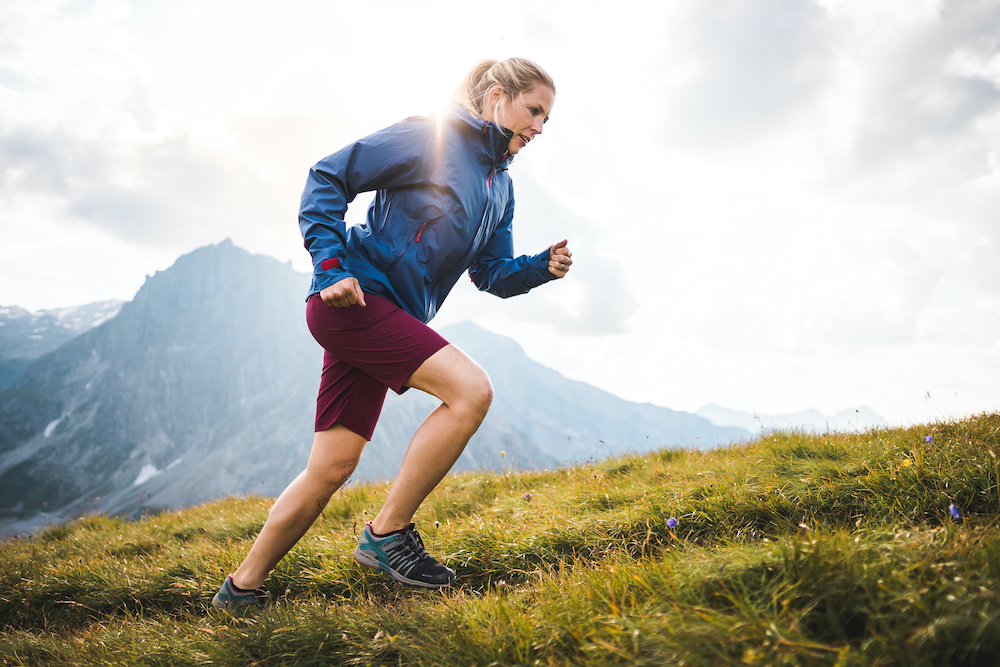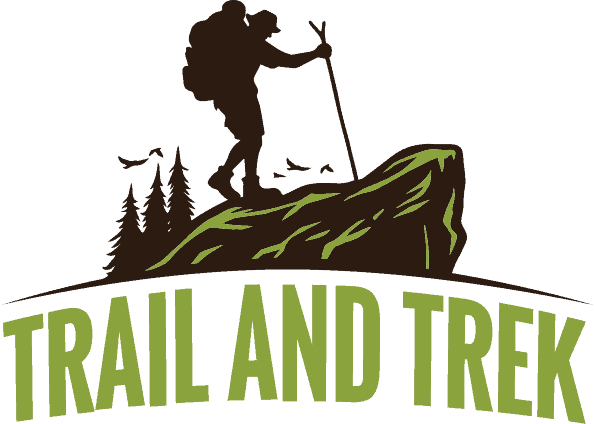
Trail running for beginners isn't easy. In fact, even if you're a seasoned road veteran and only want to mix up your routine a bit, you will surely have a hard time finishing your first trail.
That is especially if you don’t know what you should do.
Hence, you should make sure you're well prepared, and that's what we're here for: to guide you through your first trail running journey.
Things You Need for Trail Running
If you plan to participate in trail running activities and events, it is best to know a few things about it.
That includes the gear you need to have. Not only will it ensure your safety, but it would also be a different experience to have all the necessary gear for trail running.
Footwear
The first thing that you need to prepare for trail running is footwear since your feet will pretty much do everything.
It is not a good idea to wear regular shoes since they're not made for trail running.
They might get damaged while you're still on the trail, or your feet would be injured since they don't offer enough protection.
There are trail running shoes made specifically for different types of trail running, so you should look for a good brand before you start.
Synthetic or wool socks are also required to provide more protection to your feet while running.
Trail Backpack
You should always bring a trail backpack when trail running since you need something that can hold all of your trail equipment without affecting your movement.
The size and volume of your backpack would depend on the distance of your run.
A two-liter backpack is best for short trails, while you can bring as big as 10 to 15 liters for long-distance trails.
It's also best to get a backpack with multiple pockets so that you can properly organize your things.
Also, make sure there are outside pockets to help you easily access your mobile phone, GPS, and other important devices while running.
Extra Clothes
Bring extra clothes because unexpected things can happen while on the trail.
If there’s a need to stay overnight, it would not be a good idea to sleep wearing the same clothes.
Bring at least one or two extra clothing with you during trails.
Food and Water
Every runner knows how important it is to have water while running, especially in trail running.
This type of running is more demanding than any other marathon race, so you need enough water to keep your body hydrated.
However, you don’t need to bring too much because it might make your bag too heavy.
As for food, energy and chocolate bars would be good enough since having a full tummy will affect your running speed.
Since you won’t be running the whole day, and continuously, these bars would help you replenish the energy that you spent while running.
Head Cover
If you expect the weather to be scorching, bringing a hat with you will at least make your run a bit more comfortable.
You can just use a regular hat or opt for truck caps because they're very fashionable.
If you're running in mountainous areas, you can add a buff or light hat to cover your ears.

Electronic Devices
It would help if you always have electronic devices with you while trail running. These gadgets will be most helpful during emergencies.
First, you should have your mobile phone. Make sure its battery is fully charged before you go on a trail.
You also need to have a camera with you, though your phone cam would also work just fine.
A GPS watch is also a must if it is your first time trail running, and especially if you don’t know the trail.
Having a GPS watch can help you navigate and avoid being lost on the trail.
You should also bring a power bank just in case you need to spend more than a day on the trail.
First Aid Supplies
You should not bring a lot of things with you when trail running, but you should always have space for first aid supplies.
The size of the kit would depend on the duration of the trail.
You should bring blister pads since you might have blisters even if you are wearing comfortable trail running shoes.
Bandages and pain-relief medications are also important in case of injuries.
Antibiotic ointment and over-the-counter medicines for a headache should be in your kit, as well.
These supplies don’t take too much space, and you can place them in your backpack's small pocket.
Headlamp or Flashlight
We can't emphasize enough that a lot of unexpected things can happen while you're on the trail.
As such, bringing a headlamp or a flashlight with you can save your life in case of emergencies.
Trail running is risky, and many accidents can happen, so you need to be prepared not just for yourself but also for your fellow runners who might get injured while running.
Space Blanket
Space blankets are very handy. They can be useful if there's an injured runner or you got lost while on the trail.
If the temperature suddenly falls or you need to stay overnight, space blankets can also keep you warm.
These blankets only usually weigh a few ounces so if you still have a bit of space on your backpack, make sure that you bring one with you.
Useful Tips for Trail Running
Trail running and a regular marathon are completely different from each other, so if you are an athlete and think that trail running will be as easy as pie, you are making a big mistake.
So, before you take the first step in trail running, here are a few tips that can help make things a bit easier for you.
Every Trail Has a Different Adventure
Every trail is different from each other, so they also offer different challenges.
Finishing your first trail doesn’t mean that you can finish other trails easily.
You should know that there are limestone-based trails, groomed trails, and some rocky, sandy, and muddy trails.
Every trail has various obstacles that you have to go through like huge and slippery rocks, tree roots, and muddy grounds.
It’s great to be happy on your first trail, but don’t be complacent because the next one will surely be more challenging.
Beginner Mindset
It’s good that you are a seasoned road veteran and want to improve your running by doing trail runs, but showing off on your first try will not end well for you.
Most athletes would just run off fast, thinking that trail running is pretty much the same as a normal race.
After a couple of hundred meters of running, though, they will realize their mistake.
As such, always have a beginner mindset, especially if it is your first time in trail running.
That is, again, because there would be a lot of surprises along the way.
Trail running also takes up more stamina than regular marathon races since the road is uneven.
What's more, is that you will encounter hills and rocky terrains. Instead of running fast immediately, slow down your pace and find a new rhythm.
Running on trails would be a whole new experience for you, and your normal running pace won’t work here.

Always Wear Trail Running Shoes
You have the liberty to wear normal shoes or hiking shoes if you want, but doing this will only make your life more miserable.
A lot of people have already tried trail running with regular shoes, and they all end up walking on foot before they even reach the finish line.
Some of them did not even make it because they were either injured or completely exhausted.
Trail running shoes are made specifically for this type of running activity.
They have sufficient protection to make sure your feet will not get injured easily while running.
These shoes are very lightweight, so you can run fast or change your pace without hurting yourself.
Choose the Right Clothes
You cannot wear a regular shirt when trail running. You would need moisture-wicking merino wool or synthetics instead of cotton that dries slowly.
You have to get the same material for your socks since they would have the most moisture in your body.
If the weather is wet or cool, you should use a windbreaker or a lightweight rain shell.
For longer runs, it is better to dress in layers. If the trail is a bit cold, this would help you keep warm.
As you go on the trail, your body will start to warm up, and you can remove some of the layers.
If the weather changes again, you can just put them back on.
Always Look at the Trail
Most people say that they are running on trails to enjoy the scenery and to blend with nature.
That's great, but not focusing on the trail will lead to injuries. You might trip or fall if it is your first time in trail running.
If you want to enjoy the scenery, you can walk slowly or just stop.
You will eventually learn how to run and enjoy the scenery once you get the hang of it.
You can look three to four feet ahead of you to see if there are any rocks or roots on the way to prevent accidents.
Adjust Your Pace
On your first try, it is better to be mindful of your pace instead of focusing on the time.
Before running on a specific trail, you need to do your research and figure out what to expect once you are there.
Adjust your pace based on the terrain and maintain your effort level throughout the trail.
If you are in doubt, you can just walk to prevent any accidents.
You probably saw a lot of seasoned trail runners running through mud, down trees, and sand, but you cannot do it on your first try.
They have been running on trails for many years, so they already know what to do.
You have to remember that the obstacles will start to get easier as you run on different trails.
Use Trekking Poles
For beginners, trekking poles are essential, especially for steep or hilly trails.
Trekking poles can improve balance and reduce the wear and tear in your body.
By using poles, you can reduce the impact on your hips and knees.
These poles can also provide you with more strength, especially when hill climbing.
It might take a while to get the hang of it, but it will come naturally when you are going up on steep hills and terrains.
Don’t Bring Too Much
Trail running is different from hiking, which means you can’t bring a lot of things with you. Doing so can affect the speed of your run.
Unlike hiking, trail running would require you to run in certain areas, and you will get left behind if you just walk or jog.
Always bring necessary gear items that are not too heavy, especially emergency gadgets that would help you in case of an accident.
Prioritize Your Safety
Always prioritize your safety when trail running. Also, don’t do anything that you are not confident with.
Running on steep roads, sandy or muddy trails, and more can cause serious injuries, so always be mindful of the surroundings.
If you are joining people who already had experience in trail running, tell them that you are still a newbie and ask for help.
At least, they would know that it is your first time and won’t run too fast on the trail since they will need to guide you.
Trail Running for Beginners: The Conclusion
Trail running for beginners can be very difficult, especially if you have no marathon race experience.
If it is your first time, it is not bad to ask and do your research so that you won’t be surprised if the terrain suddenly changes when you are running.
Anything can happen on the trail, so you should always be prepared and bring all the necessary things to help make your run more comfortable.
